
Salads are one of the most classic dishes. They’re fantastic as sides for almost any meal you can imagine, including steak, meatloaf, and even pot pie. Plus, salads are incredibly versatile. They can be made in many ways, with an almost endless selection of ingredients.
That’s why we’re looking at the different types of salad, including many popular styles, like Caesar salad, Greek salad, coleslaw, spinach salad, and cucumber salad. There are also those types that don’t use the traditional ingredients, but are still considered salads, including macaroni salad, chicken salad, and even fruit salad.
In fact, there are a few different ways of categorizing salads. You might consider them based on their ingredients, as we are today. This includes looking at whether the salad relies on leafy greens or whether they have potato or some type of grain as their base instead.
The dressing is another angle to consider. Is this light and fairly healthy? Many vinaigrette-based salads fall into this category. Or, is it creamy and fatty instead?
Then there’s the structure. Tossed salads live up to their name, where the ingredients are all mixed together, creating a fairly even mixture. Composed salads focus on appearance instead. They’re often layered and can look very elegant. Finally, there are the bound salads, which are rich, creamy, and generally rely on starchy ingredients.
26 Types Of Salad
Leafy Green Salads
Garden Salad

A garden salad is one of the classic styles and probably the first type that comes to mind when you think about salads. It typically uses lettuce as one of the base ingredients, complemented by various raw vegetables including tomatoes, cucumber, red onion, and the like.
This is almost always served as a tossed salad, with the ingredients mixed together with the dressing until everything is coated and well mixed. Such salads tend to be light, especially when made using a vinaigrette-based dressing instead of a creamy one. As such, they’re often used as a side for heavy protein-packed meals.
Iceberg lettuce is a common choice for these salads, but hardly the only one. You can experiment with other types of lettuce too. Most will work well.
Caesar Salad

Caesar salads are famous for being delicious and decadent, although they’re also surprisingly high in calories. The salad uses romaine lettuce as the base ingredient, with croutons and parmesan cheese.
The dressing features olive oil, lemon juice, Worcestershire sauce, eggs, and mustard. Anchovies are traditionally included as well. The anchovies add a distinct flavor, although many people skip them entirely (not surprisingly!). There are other variations too, such as serving a poached egg with the salad.
Some recipe creators make simple substitutions to make Caesar salad healthier while keeping the traditional flavor profile. Still, even then, there are plenty of other healthier salads.
Cobb Salad

Cobb salad is often served as a constructed salad, with lettuce at the base and ingredients arranged in lines on top of this. Traditional ingredients include bacon, chicken breast, avocado, blue cheese, and hard boiled eggs, which are complemented by a tangy vinegar-based dressing.
The salad is now varied in plenty of ways, like using turkey rather than chicken or even using a plant-based alternative. Extra ingredients can include beans, olives, corn, and the like. You can even experiment with the type of green or swap out the lettuce.
Regardless of changes, cobb salads are almost always served in the constructed style, as this is what makes them distinct.
Spinach Salad

No surprises here. A spinach salad uses spinach as the base green instead of lettuce. Doing so gives you a healthier salad, as spinach is more nutrient dense than lettuce. You’re getting a different flavor profile, although you might actually prefer spinach over lettuce for some salads.
Spinach also tends to be a hardier green than lettuce. This means it won’t wilt as quickly in the heat and the salad should have a longer shelf life.
You can do something similar with other types of dark leafy green, like kale, Swiss chard, or collard greens. Some recipes even combine multiple dark leafy greens to provide flavor and add complexity.
Coleslaw

Coleslaw barely needs an introduction, as it is an incredibly famous salad. Shredded cabbage is the main ingredient, although other types of chopped vegetables might be included as well. Then there’s the dressing, which is often creamy and can have tangy notes as well.
Many people include some red cabbage in the coleslaw recipe, as this gives it a brighter color and makes the salad look much more interesting.
Coleslaw variations often incorporate other flavors. For example, an Asian coleslaw recipe may include ingredients like soy sauce, garlic, and ginger, while a Greek one could include cucumber, red onions, and feta cheese.
Wedge Salad

Wedge salads are unusual. They start with a wedge of iceberg lettuce that is topped by a creamy salad dressing, bacon crumbles, onion, and a handful of other ingredients.
Because of the wedge presentation, you’ll normally eat this type of salad with a knife and fork. Be sure to get some of the dressing and toppings with every bite, as iceberg lettuce is pretty boring on its own.
Fattoush

Fattoush is a Middle Eastern salad (specifically, it comes from Lebanon) that uses many familiar ingredients. Romaine lettuce serves as the salad’s base, complemented by tomatoes, cucumbers, and radishes.
The most notable addition is fried pieces of pita bread, which act much like croutons and help the salad stand out. This style makes fattoush a great way to use leftover pita bread.
Seven Layer Salad

Like seven layer dip, seven layer salad is a colorful layered dish, normally served in a glass bowl. Common layers include lettuce, red onion, green peas, cauliflower, cheese, hard boiled eggs, bacon, and a creamy dressing.
The peas are the strangest addition, yet they somehow work. The sweetness of peas even helps to tie the rest of the flavors together.
Vegetable Salads
These salads either skip the leafy greens or include them as an optional ingredient. Doing so changes the texture and creates some very interesting salads.
Waldorf Salad

The traditional Waldorf salad hails from New York City at the end of the 1800s. This salad generally combines lettuce, celery, grapes, apples, and nuts in a creamy dressing.
Sometimes you’ll see all the ingredients mixed together, while other times the lettuce might be used as a bed for the rest of the salad (or skipped entirely).
Another source of variation is the dressing. While the traditional version focuses on mayo, some modern recipes use Greek yogurt for a touch of tartness.
Greek Salad

Not surprisingly, Greek salads rely on traditional Greek flavors and ingredients. You’ll often see tomatoes, cucumber, feta cheese, kalamata olives, red onion, and bell peppers.
Notably, most versions of the salad don’t include lettuce at all. Instead, tomatoes and cucumber provide most of the salad’s body, while other ingredients add to the flavor profile.
The dressing typically relies on red wine vinegar. This helps to make it a light salad that works well with many meals. You can even enjoy it as a snack on its own.
Nicoise Salad

The nicoise salad hails from the city of Nice in France. It is a hearty salad that relies on tuna, green beans, hard boiled eggs, and tomatoes. There are plenty of variations as well, with some versions adding potatoes, white beans, lettuce, or anchovies to the mix.
The inclusion of tuna, eggs, and possibly potatoes makes this a heartier salad than normal. You might even serve it as the bulk of your meal.
Cucumber Salad

Cucumber salads tend to be simple. Many just use a combination of cucumbers and onions with a vinaigrette dressing. These ingredients create a refreshing summer salad.
You can also make a creamy cucumber salad instead. This version simply uses a sour cream or mayo-based dressing instead of a vinaigrette one – providing cool creaminess.
Caprese Salad

Then there’s caprese salad. This is one of the simplest on the list, as the base of the salad just relies on fresh mozzarella, tomatoes (often sliced), and fresh basil leaves.
The simplicity of the salad works in its favor, as the different flavors all get to shine through. This is especially true if you use olive oil or pesto as a dressing rather than balsamic vinegar.
You can also experiment with the presentation of this salad. For example, some people make it with slices of mozzarella and slices of tomatoes, laying the slices out on a plate. Others may chop the ingredients and serve it as a type of tossed salad instead. You can create caprese salad skewers.
Beet Salad

Beet salad is simply any type of salad that relies on beets as a main source of flavor. Some recipes do so by including beets, leafy greens, and various other ingredients, like this Beet Salad with Goat Cheese and Balsamic, and this Roasted Beet Salad with Goat Cheese.
Other recipes skip the leafy greens entirely and allow beets to dominate the dish. For example, this Moroccan Beet Salad relies on beets, red onion, fresh mint leaves, and fresh cilantro leaves, plus a delicious Moroccan dressing. Focusing on beets like this creates a very delicious salad.
Plus, if you skip the fresh herbs, a beet-based salad like this should last five days or so in the fridge.
Israeli Salad

An Israeli salad can be served alongside most meals and is an easy dish to prepare. The main ingredients are diced tomato, cucumber, onion, and bell peppers (sometimes chili peppers instead). You’ll typically see some fresh herbs as well, along with olive oil and lemon juice in the dressing.
Tabbouleh

Tabbouleh is a salad that heavily features herbs, bulgar wheat, tomatoes, and cucumber. It’s a fantastic way to use fresh mint and parsley, while giving you a flavorful dish.
Interestingly, while the salad features bulgar wheat, this isn’t the star of the show at all. The wheat simply provides extra texture, while the herbs and other ingredients dominate the flavor profile.
Bound Salads
Most people will be familiar with bound salads, even if they’ve never heard the name before. Such salads have a thick dressing that binds the ingredients. The dressing makes the salad rich and creamy, and often means it can be easily scooped.
This style makes bound salads quite different than the salads we’ve featured thus far. Still, they’re popular and shouldn’t be overlooked.
Creamy Pasta Salad

Here, we’re talking about dense and creamy pasta salads, particularly the macaroni salad that you might serve during a BBQ. Such salads normally include small amounts of hearty vegetables, like bell peppers or broccoli florets. Other possible ingredients include cucumber, bacon, corn, feta and sometimes even beans.
Still, regardless of the added ingredients, these salads strongly emphasize the pasta and creamy sauce. The salads are best served cold and are perfect as a make ahead pasta dish.
Tuna Salad

Tuna salad is popular as a sandwich ingredient and is sometimes served as a side as well. It’s normally made using canned tuna, which is mixed with mayonnaise and a few other ingredients, like celery, relish, and onion.
Serving the salad with lettuce is an easy way to increase the fiber content and balance the meal. You can also tweak the recipe, such as by adding chopped pickles, eggs, or capers. Such extra ingredients make the tuna salad more distinctive and might also improve the flavor.
Chicken Salad

Chicken salad actually falls into two categories, depending on how it is made.
One approach is to create a bound salad version, often using shredded chicken. This has a similar texture to tuna salad and is used in similar ways.
Other versions keep the chicken more discreet. It may simply be used as one of many ingredients in a tossed salad or a cobb salad.
Egg Salad

Egg salad is one of the simplest approaches. It generally relies on hard boiled eggs that have been mashed or chopped, then tossed with mayonnaise, salt, and pepper. Paprika and mustard are sometimes added for extra color and flavor, although neither are essential.
Potato Salad

Potato salads also come in many styles. Some are bound, relying on a delicious creamy dressing. This is the more classic style, although you need to be careful of the dairy-based dressing if you are serving the salads during summer picnics.
Others skip the creaminess and go for a lighter style instead. Such versions often rely on fresh herbs and are often very refreshing. The lack of mayo also makes these versions more resilient and less heat sensitive than creamy versions.
Other Types Of Salad
These final types of salads often rely on alternative grains or other sources of carbs. They’re often very healthy and surprisingly satisfying.
Quinoa Salad

Quinoa is a pesudocereal that is often called a superfood these days. It does have some powerful properties too, especially as you get plenty of nutrients, fiber, and protein in a small package.
A quinoa salad is an easy way to use the seed, as the flavors pair well with many ingredients. Some versions rely on red pepper, cucumber, parsley, and lemon juice, while others focus on different flavor combinations.
Couscous Salad

While couscous looks a lot like quinoa, it isn’t actually a pesudocereal. Couscous is actually a type of pasta instead, typically made from coarsely ground durum wheat.
When making a salad, couscous is often served cold with a light dressing. Familiar salad ingredients, such as tomatoes, bell peppers, fresh herbs, and feta, are are also used to complement the couscous and bring the salad to life.
Because couscous has a mild flavor, you can use whatever toppings you like on it. To get started, think about the flavor profile you’re going for. Mediterranean couscous salads are popular places to begin, but you could experiment with something completely different.
Non-Bound Pasta Salad

Pasta salad can be made as a bound salad, complete with a thick and creamy dressing. However, this isn’t the only approach. You can also create versions with much lighter dressings, including Italian dressing.
Such salads had a more varied appearance and contrasting textures. You may even use some of the popular ingredients from other types of salad, like cherry tomatoes, red pepper, olives, and feta.
There are plenty of recipes and styles, all with their own flavors and features. When preparing them, make sure the pasta you choose matches your chosen recipe. Also be sure that you don’t overcook your pasta, as an overcooked pasta salad can be pretty gross.
Fruit Salad

We can’t forget fruit salad. This can simply involve different types of chopped fruit in a light dressing or be more complex.
Classic ingredients include peaches, pears, apples, oranges, grapes, and pineapple, but you have endless options at your fingertips. You could even experiment with exotic fruit to create an exciting variation on the theme.
There are also some examples of bound fruit salads, particularly ambrosia. This creamy salad even includes marshmallows as an ingredient. As such, it certainly isn’t a healthy choice (but it is delicious!).
Bean Salad

Finally, we have bean salads. Many versions focus heavily on the beans. They may include three or more types of beans to make the salad more interesting visually. Then there’s some type of tangy dressing and perhaps other ingredients, like cucumber.
Other versions include beans as a secondary ingredient. For example, this Mediterranean Bean Salad uses a large selection of ingredients, including beans, chickpeas, bell peppers, olives, cucumbers, and artichokes. Such recipes are fantastic if you’re not a huge bean fan.
Frequently Asked Questions
Are Salads Healthy?
Salads certainly can be healthy. They’re an easy way to increase your vegetable intake and often provide plenty of nutrients. Yet, the health implications vary dramatically. Part of the problem is the dressing, which can be loaded with fat and calories.
Some salads contain extra calories from their ingredients too, like cheese, croutons, and bacon. The combination of dressing and extras makes some salads extremely high in calories and not healthy at all.
What Can You Put In A Salad?
Salads are an incredibly versatile dish, to the extent that almost any ingredient can be included. The best ingredients will vary based on the type of salad you’re choosing, along with the desired texture and flavor profile.
For example, a traditional lettuce-based salad often relies on vibrant vegetables like red peppers, tomatoes, and cucumbers. You might add ingredients like feta and kalamata olives if you’re going for a Greek salad or rely on heavier ingredients if your salad doesn’t include leafy greens.
How Long Do Salads Last In The Fridge?
The length of time varies considerably depending on the type of salad. Salads that rely on hearty ingredients, like kale and carrots, may remain good in the fridge for up to a week. Salads with more delicate ingredients won’t last as long. Some will last around five days, while others might only last two or three.
Because salads typically contain a mix of ingredients, somewhere between three and five days is the safest bet. Of course, the quality will be best within a day or two of making the salad.
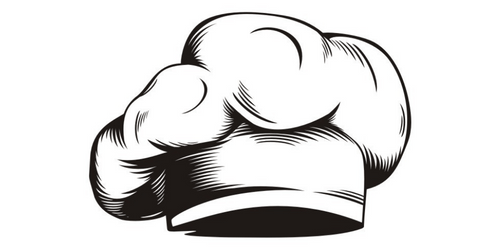
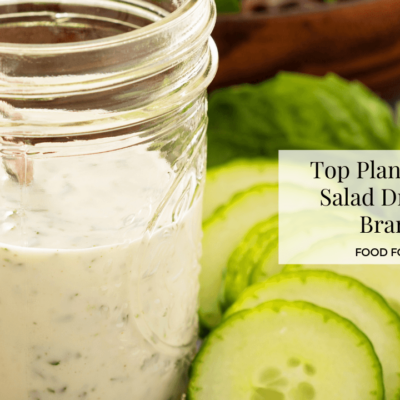
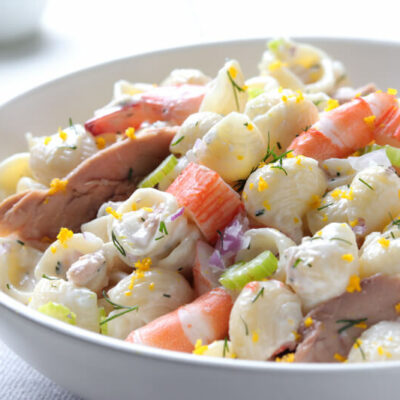
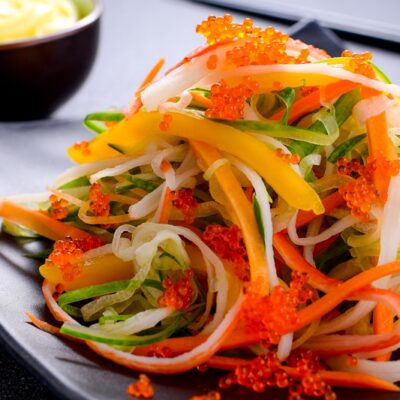
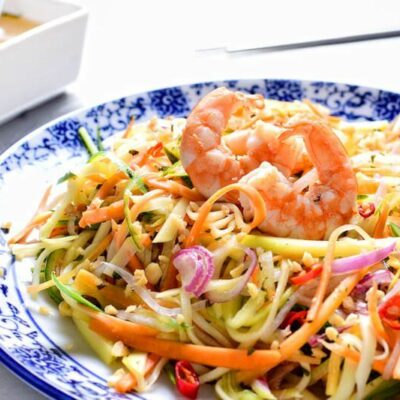
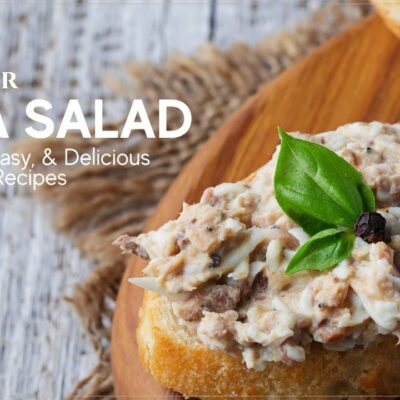
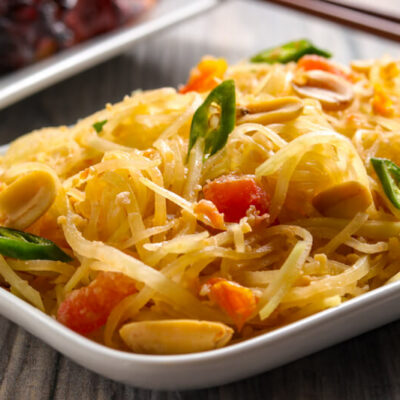


 How To Use Dried Mint
How To Use Dried Mint